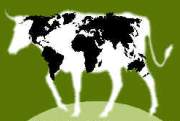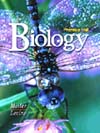|
The
brain eaters: A medical detective story behind our understanding
of Mad Cow
There is still a great deal of uncertainty about Mad Cow and other spongiform encephalopathies. Our understanding of these diseases has come a long way, but still has a long way to go. Right now, the more we learn, the more complex we realize these diseases are, and the more questions arise about them!
What do we know — or think we know about SEšs at this point in time? (Note that the following answers assume that the prion hypothesis is correct. If it isnšt wešre back to square one on several points!)
Regulations
govern what is fed to US and Canadian beef The single most important point to remember concerning BSE in the American beef supply is that the kinds of feeding practices described in Part 4 were outlawed in both the United States and Canada in 1997.
The infected cow identified in the state of Washington toward the end of 2003 is now known to be old enough that it could have eaten feed containing rendered cattle remains before 1997.
The USDA is on the case In mid-January of 2004, the US department of Agriculture declared an "extraordinary emergency" in Washington State. This move gives federal authorities added authority to take actions they think necessary to protect public health, the safety of American beef, and the reputation of the American cattle industry. Handling the matter in this way also authorizes federal authorities to pay farmers for any losses they suffer because of BSE. As of January 15th, roughly 600 cattle had been disposed of in an effort to prevent the spread of BSE.
SE's can arise in different ways Many researchers agree that there seem to be at least three distinctly different forms of C-JD.
•
Infectious (transmissible) Some SE's, such as Kuru and BSE are transmitted by eating infected tissue, apparently primarily nervous system tissue.
• Inherited Some type of human C-JD do appear to be inherited. Preliminary research shows that these forms of can be caused by up to 20 different mutations of the gene that codes for the human prion protein. These types of C-JD occur later in life, and have different symptoms, than transmitted BSE.
• Sporadic Some
cases of C-JD in humans, and possibly also some cases of BSE in cows,
seem to crop up for reasons we do not yet understand. Some researchers
estimate that sporadic C-JD crops up in roughly one in every million
people.
SE's occur in a number of mammalian species SE's are now known in a wide variety of mammals, ranging from sheep and cows to other grazing animals including elk, deer, and goats, as well as mink and several species of cats. The form of SE found in wild deer in the western United States, for example, is currently called Chronic Wasting Disease.
|
||
|
|

